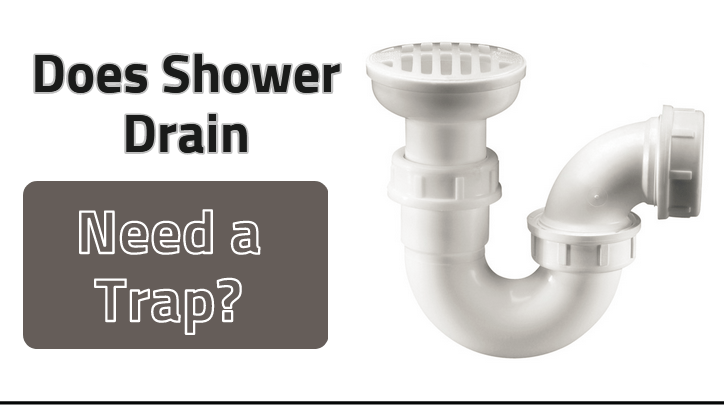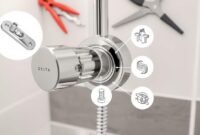Have you ever wondered if your shower drain needs a trap? If you’re a homeowner or renter, you may not have given much thought to the plumbing systems in your home. However, understanding the role of a shower drain trap is essential for preventing costly plumbing problems. In this article, we’ll answer the question, “Does shower drain need a trap?” and explain various types of shower drain traps and their specific locations.
Does Shower Drain Need a Trap?
The simple answer is yes, a shower drain needs a trap. While it may seem unnecessary, a trap serves a critical function in your plumbing system. This small but mighty piece of piping is designed to prevent harmful sewer gases and unpleasant odours from wafting through your home while also keeping debris like hair, soap, and dirt from clogging up your pipes.

Not only can these blockages be frustrating to deal with, but they can also lead to significant plumbing problems if left unchecked. When water and debris can’t flow through your pipes as they should, it can cause backups and overflows that can damage your flooring and walls and even create hazardous conditions.
Read also: How to Fix a Leaking Plastic Water Pipe with Quick and Easy
A shower drain trap can save you a lot of trouble and money in the long run. By stopping harmful gases and debris from flowing through your pipes, you’ll be able to avoid plumbing disasters and maintain a healthy and safe environment in your home.
Shower Drain Trap Types
There are two main types of shower drain traps: P-traps and S-traps.
P-trap: A P-trap is the most common type of shower drain trap. It gets its name from its shape, which resembles the letter “P.” A P-trap is located below the shower drain and works by creating a water seal. When water flows through the drain, it fills up the P-trap, creating a barrier that prevents sewer gases from entering your home.
S-trap: An S-trap is an older style of shower drain trap that is no longer used in modern plumbing systems. It gets its name from its shape, which resembles the letter “S.” An S-trap is similar to a P-trap, but it’s not as effective at preventing sewer gases from entering your home. Additionally, S-traps are more prone to clogging and are not compliant with modern plumbing codes.
Where is the P-trap Located in a Shower?
The P-trap is located below the shower drain and is typically hidden behind a wall. It’s connected to the drain and the plumbing vent pipe, which extends through the roof. The plumbing vent pipe allows air to flow in and out of your plumbing system, which helps prevent air pressure buildup that can cause sewer gases to escape.
Sometimes, the P-trap may be accessible from the basement or crawlspace. If you’re experiencing plumbing issues, checking the P-trap for any clogs or debris is a good idea.
In conclusion, it is crucial to have a trap installed in your shower drain system to avoid expensive and unpleasant plumbing issues. Ensuring that your shower drain has a properly functioning trap is essential. If you have any worries or are experiencing plumbing problems related to your shower drain trap, it is best to seek the assistance of a professional plumber.
By taking care of your shower drain trap and scheduling regular maintenance, you can prevent future plumbing issues and maintain a safe and healthy living environment for yourself and your family. So, the answer to “does shower drain need a trap?” is a definite yes.


